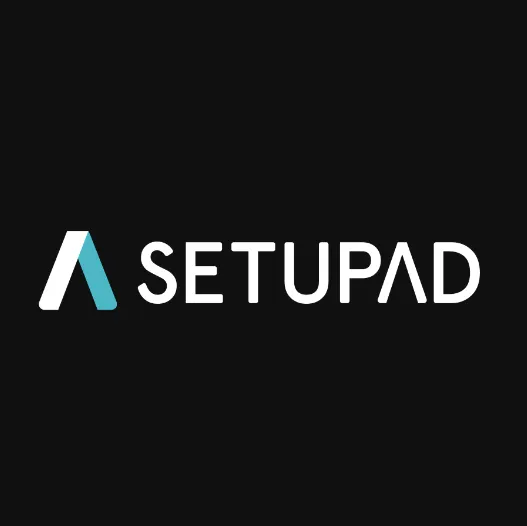Best Website Optimization Tools for Publishers & Bloggers
Website optimization is one of the things that every publisher, blogger, and website owner needs in today's fast-paced digital world if they want to engage with the audience, drive traffic, and rank better in search engines. However, the performance of your website determines the experience your audience gets from you. Most visitors run away when the pages take time to load. In such a case, you will have poor rankings on the search engine and less conversion because the visitor will not stay on your site long enough. But do not worry, as there are many tools designed to give publishers an efficient way to optimize their websites.
Why Website Optimization Matters for Publishers
As a publisher, the website performance is essentially about what determines whether content published on the web will be successful or not. Whether articles, e-books, or videos, the best possible optimized website means users have a good experience-meaning that people will read on and not bounce out of the site.Optimization also impacts the user experience in a direct method and, therefore, has an impression on your search engine rankings. The speed of the site, mobile-friendliness, and overall user engagement all are factors in search rank for Google, among other search sites. Publishers who do not bother to optimize will probably see fewer chances to profit from existing content due to lower rankings and decreased presence. For bloggers and website owners, the performance optimization is possibly the difference between your audience's loyalty and the abandonment rates. Therefore, you must make your website well-tuned for performance as a priority.

Key Features to Look for in Website Optimization Tools
There are a large number of site optimization tools today, but not all of those tools are for publishers or bloggers. Here's what you need to be aware of when you are selecting one for your publishing business:
- Website Speed Optimization: A slow website drives users away. Choose tools that help you reduce load times by addressing issues such as image compression, browser caching, and code minification.
- SEO Capabilities: SEO is critical to drive organic traffic to your website. Look for tools that provide comprehensive SEO analysis and actionable suggestions for improvement.
- User Experience (UX) Tools: Understanding how visitors interact with your website can significantly impact user engagement and time spent on your pages. Heatmaps, scroll maps, and session recording tools can give you these insights.
- A/B Testing: For improving conversion rates, A/B testing allows you to experiment with different elements of your website, from content layout to CTA placement, to determine what works best.
- Analytics and Monitoring: Continuous monitoring of your website’s performance is essential. Choose tools that offer detailed analytics on website traffic, bounce rates, conversions, and more.
With these features in mind, let's explore the top website optimization tools designed specifically for publishers.
How to Choose the Right Optimization Tools for Your Publishing Business
Understanding your target audience is paramount in creating a tailored optimization strategy. Here are some steps to consider:
- Analyze User Behavior: Use tools like Hotjar to understand the kind of behavior your users will have on your website. Mostly, will your visitors be using their mobiles? Will they engage more with visuals or content text? Once you analyze all these behaviors, then you'd know the exact area of your website that needs optimization.
- Identify Content Preferences: In reality, different segments of audiences respond differently to varied formats. Use SEMrush and find out what kind of content your audience likes. Now plan your efforts on optimizing these preferred formats or articles, videos, or infographics accordingly.
- Demographics Adjustment: Understand your demographics, their age, location, and what devices they use because what device is used can affect how the site will look.
- Iterate Based on Feedback: Engage with your audience regularly and ask for regular feedback about your video whether it is mailed or social media polls.
By tailoring your optimization strategy based on your audience's preferences and behaviors, you ensure that your website serves their needs effectively, enhancing user engagement and satisfaction.
SE Ranking is a feature-rich SEO management platform designed for businesses seeking scalability and workflow efficiency. With over 40,000 users worldwide, it transforms vast data sets into actionable insights. Its comprehensive suite includes keyword tracking, website audits, competitor analysis, on-page SEO, and backlink monitoring, making it one of the best SEO tools for enhancing online visibility.
Combining Tools for Maximum Efficiency and Performance
Although much advantage can be reaped from each tool on its own, it gets better when several tools are combined together. Here's how to achieve maximum efficiency and performance:
- Integrate SEO and Performance Tools: For instance, integrating Yoast SEO with GTmetrix lets the tools not only help you improve your SEO strategy but also make your website faster. With optimized content and speed, you are going to let people enjoy user experience together with search rankings.
- Use analytics and feedback loops: Try Google Analytics with Hotjar, a user feedback tool- give you both views of how and why users are behaving on your site. Analytics can show you the navigation flow users are taking on your site, but feedback can give you insight on why they are behaving that way.
- A/B Testing with Optimization: This integrates Optimizely for A/B testing into content management tools, so that you can test variations of your content while measuring the effect of those variations on user engagement and conversions-then ensure that each piece of content is optimized for performance.
- Leverage CDN: Make use of Cloudflare's content delivery network with performance monitoring tools such as GTmetrix.
By combining tools that complement each other, publishers can create a robust optimization strategy that addresses multiple facets of website performance, ultimately leading to a better user experience and improved engagement.
Next Steps for Publishers and Bloggers in Website Optimization
To take actionable steps towards optimizing your website:
- Analyzing Your Current Performance: Analyze your website with tools like GTmetrix and Google PageSpeed Insights. Note specific areas for improvement.
- Define Clear Objectives: This would explain whether the page load time needs to improve, increase user engagement, or enhance search ranking.
- Make Gradual Changes: Implement your chosen changes according to your assessment in a step-by-step manner. Monitor the impact of each change before making further changes.
- Keep Track of Trends: The digital environment is in constant evolution. Discover relevant newsletters and communities online and join them in order to be aware of new optimization tools and methods.
- Iterate and Optimize: Always try to improve. Keep analyzing the performance of your website, user feedback, and iterate your strategy in accordance with whatever insights you derive from there.
By following these steps, publishers and bloggers can create an optimized online presence that not only attracts visitors but also keeps them engaged.
Final Thoughts on Using These Tools to Enhance Your Website
Each of the tools to be discussed-Google PageSpeed Insights and Yoast SEO to GTmetrix and Hotjar works uniquely towards the optimization process. Using each of these tools, you are sure that your content is accessible but engaging as well as relevant for the audience.

Web optimization is not something that a person needs to do once. It's ongoing, and analysis and adjustment will be needed time and again. Otherwise, keeping all the new tools and finding out the best practices will help keep you ahead of the game in the highly competitive publishing landscape.
Conclusion
Website optimization is a kind of never-ending process applicable to publishers and bloggers interested in driving traffic, capturing their audience, and improving ranking with search engines. The tools above-discussed Google PageSpeed Insights, Hotjar, Optimizely, and Cloudflare may offer a kind of powerful, well-rounded combination for having your website run better, be more user-friendly, and enhance SEO. For that matter, you can further optimize the performance of your website, create a tailored user experience, and ultimately maximize the utility of content by using several tools and integrating them into a combined strategy.
Keeping an eye on the latest trends of the world of the digital media, keeping optimizing the website all the time is the most important thing that one will have to do in order to stay ahead in the curve. Whether a small blogger or a big publisher, if the right tools are used for the website optimization, it could help attract visitors to a much greater and better extent and then keep them engaged with the site, which would result in a much higher conversion rate and long-term success.
Website Optimization Tools FAQs
Our Editors’ Pick:
Browse these amazing publisher monetization tools handpicked by our team of editors






 (1).webp)


